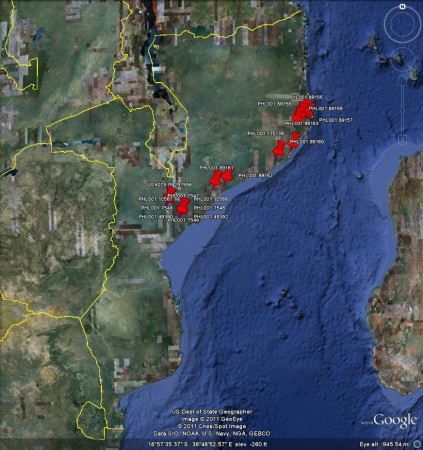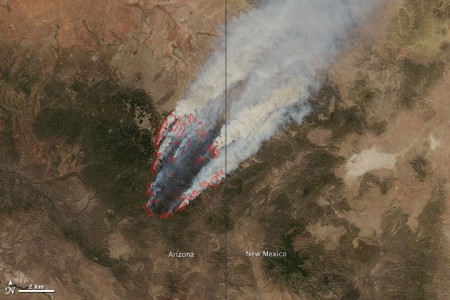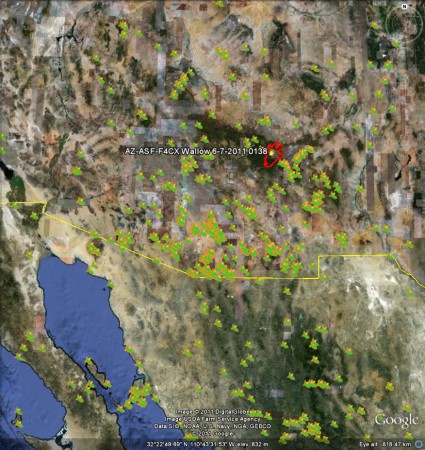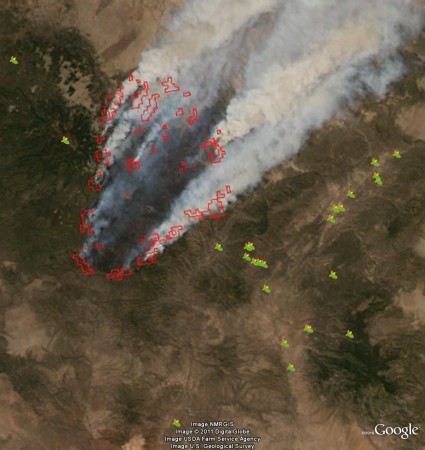Experts estimate that we have lost more than half of the world’s food varieties over the past century.
The future of rice in Mozambique
Readers with long memories who had time on their hands back in January may remember a post we did then on IR80482-64-3-3-3, a new rice tailor-made for Mozambique. There was some discussion at the time about the claims being made in the original SciDevNet piece about the new variety on which we based our post, but what really struck me was this statement:
Work began when the International Rice Research Institute (IRRI), in the Philippines, sent Mozambique 11,200 rice varieties for testing.
That just sounded like quite a lot of varieties, and I remember wondering at the time how long it took the Mozambique national rice programme to get through that little lot. But anyway, I bring this up now not only because someone from IRRI has very kindly left a comment on the original post. But also because IR80482-64-3-3-3 is back in the news, cannily renamed Makassane. The IRRI press release has been widely picked up.
Following the approval of Makassane for release by the Mozambique Variety Release Committee earlier this month, IRRI provided government agencies and farmers “foundation seed” to use in bulking up the seed so that more can be produced and distributed to more farmers.
 Two things about this. First, I look forward to regular updates on Makassane’s uptake by farmers. And second, I hope the IRRI and Mozambique national genebanks are confident that they already have good representation of the local landraces. Sophie, who left the aforementioned comment, says there are 76 rice types from Mozambique at IRRI. Genesys gives us just over 120 worldwide, between landraces and wild species, but only a few are geo-referenced (see map).
Two things about this. First, I look forward to regular updates on Makassane’s uptake by farmers. And second, I hope the IRRI and Mozambique national genebanks are confident that they already have good representation of the local landraces. Sophie, who left the aforementioned comment, says there are 76 rice types from Mozambique at IRRI. Genesys gives us just over 120 worldwide, between landraces and wild species, but only a few are geo-referenced (see map).
Wallow Fire (may) threaten (some) wild beans. Maybe.
There’s a really bad fire spreading in Arizona. 1
You can donwload all kinds of stuff about it, and even post your experiences of it on Facebook. But can you find out whether any crop wild relatives are threatened by it? Well, sure: all you have to do is go off to GBIF, and choose a likely genus (Phaseolus, say), and download the records, and mash them up in Google Earth with the latest fire perimeter data or whatever. 2 Like I’ve done here:
Coming in closer, and using the NASA GeoTIFF instead of the normal Google Earth imagery, you can put yourself in the position of being able to make some reasonably intelligent guesses about what might be happening to some of these populations, and the genepool as a whole in the area:
But what I really meant is that there ought to be a way to do this automagically, or something. Anyway, it is sobering to reflect that while all hell is breaking loose in Arizona, not that far away to the northeast, in the peaceful surroundings of the Denver Botanical Garden, Anasazi beans are enjoying their day in the sun, utterly oblivious of the mortal threat faced by some of their wild cousins. It’s a cruel world. And there’s a point in all this about the need for complementary conservation strategies that’s just waiting to be made. Isn’t there?
Nibbles: Royal genebank, Fish collection, Plant health, USDA wheat breeding project, Afghanistan, Breadfruit Art, Pests and Diseases, Idaho, Plant breeding, Gates, Panax quinquefolius, Natives
- Thai king has crop genebank on palace grounds.
- Fish in jars.
- Planning Plant Clinics.
- Plant Breeding for Drought Stress: The Project.
- Wait, the Nebraska National Guard has an agribusiness development team? Maybe they should talk to the people responsible for the previous bullet point?
- Kids! (And adults!) An Art Contest to celebrate ‘Ulu. Breadfruit, that is.
- Use of Agrobiodiversity for Pest and Disease Management. A slide show from Carlo Fadda at Bioversity.
- 3rd Annual Biodiversity Working for Farmers Tour in Idaho. 23rd June, you have been warned.
- Huge New York Times story on plant breeding and climate change.
- Bill Gates hails creativity for small farmers challenge.
- American ginseng: use it or lose it.
- Do you live in Ann Arbour? Do you want native plants for your garden? Yeah but how about American ginseng?
Brainfood: Millet biscuits, Wheat micronutrients, Diversification and C footprint, Agroforestry, Epazote, Grape history, Belgian farmers, Millet phenology, Species migration, Barley domestication, Sheep genetics
- Quality characteristics of biscuits prepared from finger millet seed coat based composite flour. They’re nutritious. Crocodile Dundee on the tastiness of the iguana may, however, apply.
- Minerals and trace elements in a collection of wheat landraces from the Canary Islands. There are differences, but environment and agronomic practices could affect them.
- Lowering carbon footprint of durum wheat by diversifying cropping systems. Yes, by 7-34%, depending on how the diversification was done.
- Effect of shading by baobab (Adansonia digitata) and néré (Parkia biglobosa) on yields of millet (Pennisetum glaucum) and taro (Colocasia esculenta) in parkland systems in Burkina Faso, West Africa. Taro is a shade lover; grow it under néré, and vice versa.
- Ethnobotanical, morphological, phytochemical and molecular evidence for the incipient domestication of Epazote (Chenopodium ambrosioides L.: Chenopodiaceae) in a semi-arid region of Mexico. Good to know; I love epazote.
- Grape varieties (Vitis vinifera L.) from the Balearic Islands: genetic characterization and relationship with Iberian Peninsula and Mediterranean Basin. See the grand sweep of European history unfold.
- Microsatellite characterization of grapevine (Vitis vinifera L.) genetic diversity in Asturias (Northern Spain). No evidence of communication with the previous group.
- Plant economy of the first farmers of central Belgium (Linearbandkeramik, 5200–5000 b.c.). They were dope fiends.
- Selection for earlier flowering crop associated with climatic variations in the Sahel. Compared to 1976 millet samples, samples collected in 2003 had shorter lifecycle (due to an early flowering allele at the PHYC locus increasing in frequency), and a reduction in plant and spike size. So you don’t need new varieties, the old ones will adapt to climate change. Oh, and BTW, there’s been no genetic erosion.
- Do species’ traits predict recent shifts at expanding range edges? No.
- The domestication syndrome genes responsible for the major changes in plant form in the Triticeae crops. Failure to disarticulate and 6-rows in barley, in detail. Part of a Special Issue on Barley.
- The genetics of colour in fat-tailed sheep: a review. I didn’t know karakul had fat tails.


